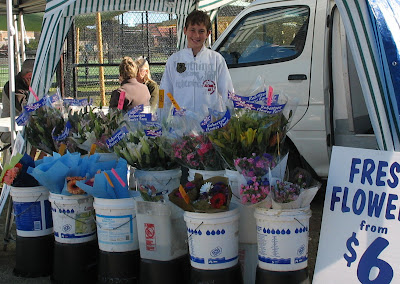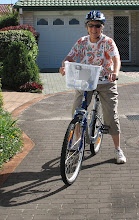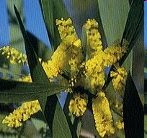This morning I received a post from
Judy of Kentucky who is one of my loyal blogger friends.
Inspired to know more about Oz, Judy is reading American author Bill Bryon's travel book
In a Wide Brown Land and this in turn got me thinking about the source of his title - Dorothea McKellar's iconic poem
My Country, ironically written when Dorothea was homesick for England, but already under the spell of her new homeland.
We learned the second stanza when I was in primary school - as did almost every Australian child of the time. It is probably the most memorised poem in the nation.
I love Bill Bryson's writing but, as I remarked to Judy, I do quibble with his opinion that Australia has a 'Martian-like desert middle'. The fact is that so many people seem to whizz through the Outback at a great rate of knots, not stopping to LOOK! (Bryson may have seen it from the air, even though he does visit here often.)
The place is mostly teeming with life - be it tiny fauna or exquisite desert flowers and interesting scrub, although I must admit there are places which are pretty desolate.
I remember stopping in a deserted area in the 1980s with 500km between petrol stations (or anything else) only to be approached by a pair of brolga (beautiful big birds of the crane family).
They seemed to be reasonably tame, so I suppose many other people had taken a break there as well.
This brolga pic somes to us courtesy of photographer John O'Neill and Wikipedia.

Anyway, here is Dorothea's poem:
MY COUNTRY
The love of field and coppice, of green and shaded lanes,
Of ordered woods and gardens is running in your veins.
Strong love of grey-blue distance, brown streams and soft, dim skies-
I know but cannot share it, my love is otherwise.
I love a sunburnt country, a land of sweeping plains,
Of ragged mountain ranges, of droughts and flooding rains.
I love her far horizons, I love her jewel-sea,
Her beauty and her terror - the wide brown land for me!
The stark white ring-barked forests, all tragic to the moon,
The sapphire-misted mountains, the hot gold hush of noon,
Green tangle of the brushes where lithe lianas coil,
And orchids deck the tree-tops, and ferns the warm dark soil.
Core of my heart, my country! Her pitiless blue sky,
When, sick at heart, around us we see the cattle die -
But then the grey clouds gather, and we can bless again
The drumming of an army, the steady soaking rain.
Core of my heart, my country! Land of the rainbow gold,
For flood and fire and famine she pays us back threefold.
Over the thirsty paddocks, watch, after many days,
The filmy veil of greenness that thickens as we gaze.
An opal-hearted country, a wilful, lavish land -
All you who have not loved her, you will not understand -
Though earth holds many splendours, wherever I may die,
I know to what brown country my homing thoughts will fly.
- Dorothea McKellar






























